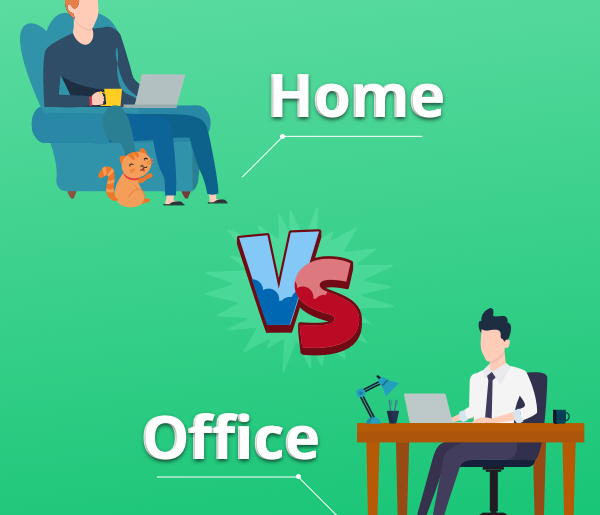As a small business owner, having a professional brand is essential to stand out in a competitive market and get noticed by potential clients. Your brand gives the impression of how reliable and credible your work is, and it’s essential to creating trust with those who are interested in your services.
A strong, professional brand will show potential clients that you’re serious about your work and that you can provide quality services. It will also help you gain more visibility and establish yourself as an authority in your field.
In this blog post, we’ll give you seven tips for branding your freelance business to make sure your brand looks professional and attractive to potential clients.
1. Craft Your Mission Statement
A mission statement is a declaration of what your business stands for and how you plan on serving your clients’ needs. It should also be unique to your business and help to communicate your mission to potential customers, helping you to stand out from your competitors.
A well-crafted mission statement will describe your business and will help to position your brand in the minds of your potential customers. For it to be effective, it should be short, clear, and easy to understand — so take your time, as it should be one of the basic things you develop as a business owner. It’s a good idea to look at examples of great mission statements and learn from them before you come up with yours.
Creating a clear and concise mission statement will also help you stay true to your brand and make decisions that align with your values and mission. In addition, it will help you stand out from other freelancers and small businesses with similar services by clearly defining your values and the approach you take to providing your services to your customers.
Once you have a clearly defined mission for your business, you can begin crafting your brand identity around this statement and conveying this message to your audience through your branding efforts.
2. Establish a Consistent Color Scheme
Another important aspect of building a professional brand is establishing a consistent color scheme. This means picking a few colors you’ll use throughout your website, social media presence, marketing materials, and other branding elements.
A great starting point is to pick your main brand color and then use a few accent colors sparingly to add interest and texture. Make sure that the colors you choose evoke the right emotions in your target audience and reflect the values of your brand. Colors have a powerful impact on how we perceive things — for example, red is associated with passion and excitement, while blue evokes feelings of tranquility and trust.
Choosing the appropriate color palette for your freelance business will be essential in conveying the right message to your target audience and creating a strong brand image in their minds. Keeping it consistent will also help you create a cohesive brand and will also make all of your marketing materials look more polished and professional.
3. Create a Professional Logo Design
Your logo is a crucial part of your brand, so you should design it with as much care and attention as the rest of your business. For a strong brand identity, it should reflect the values and personality of your business and be easily recognizable. A professional-looking logo can set your business apart from the competition, but contrary to what you may think, it can be done quickly with minimal resources. One of the simplest ways to achieve it is by using a logo maker to create one independently, usually within a few easy steps, and customizing it according to your business.
When designing your logo, keep in mind the color scheme you’ve chosen for your business. Make sure the logo itself reflects the values of your brand while also being eye-catching and memorable. Avoid using clip art or stock images when developing your logo — other than avoiding issues with copyright and trademark disputes. You’ll want something that looks professional and conveys the right message. Also, make sure you can use the logo in a variety of formats, like on your website, social media, and on printed materials.
4. Use Quality Imagery
Quality imagery is essential for creating a professional brand. People are visual creatures, so having good imagery that reflects your brand and mission will help people connect with your business. Plus, you can use these visuals again and again to help you create consistent branding across all your online platforms. This is also something that shouldn’t be complicated for you to get, as you can simply go on a stock images site to browse and download visuals that are a good fit for you, many of them for free.
When choosing images for your business, use visuals that are relevant to your business and of high quality. This means using images that are taken by you or are from a professional stock image site. Using low-resolution images or images that are not relevant to your business can decrease the quality of your brand and make it look cheap.
5. Update Your Personal Headshots
And speaking of quality imagery, you should also update your personal headshots for your website and social media profile. Having an updated headshot is essential to maintaining your professional brand image, especially if you run a service-based business.
These photos will be seen by potential and current clients alike, so be sure to get several photos in different settings and use them throughout your social media and website to make sure you’re representing yourself accurately at all times.
If you’ve got the budget for it, you can also look into hiring a professional photographer to take new photos for you – otherwise, pay a friend in beer/wine/dinner to take some natural photos of you with a good smartphone camera.
Either way, you’ll want to make sure that these photos represent who you are as a person and a professional. This is your opportunity to shine, so make sure you’re putting your best face forward!
6. Choose Fonts That Match Your Brand
Every business needs a font that’s a good fit for its brand. Choose a font that’s in line with the tone and message of your company: whether you’re a serious and professional outfit or a fun and humorous one.
The font should match your branding, so if you have a modern logo, you’ll want to find a font that’s modern and minimalistic. If you’re going for a more traditional look, however, then you’ll want to find a font that’s more classic and timeless.
Pick a few fonts that you like, and test them out with your logo and other branding materials to make sure they look good together.
7. Tie All Together on Your Professional Website
Having a professional website is essential for any freelancer. Not only does it provide potential clients with an opportunity to learn more about you and your services, but it’s also a great way to tie together all the elements of your brand.
You can list your services, showcase samples of your work, link to your social media profiles, and provide contact information. You can also use your website to show off the client testimonials you’ve gathered, helping to boost your credibility further.
And once it’s active, make sure you update your website regularly to keep it current and reflect any changes in your services.
Wrapping up
A strong, professional-looking brand is essential for any freelance business. It will help you stand out from the competition, attract more clients, and build credibility in your industry.
With the right branding strategy, you can create a professional and memorable online presence that will ensure your success as a freelancer. Investing in your brand is worth it and will pay off in the long run.


